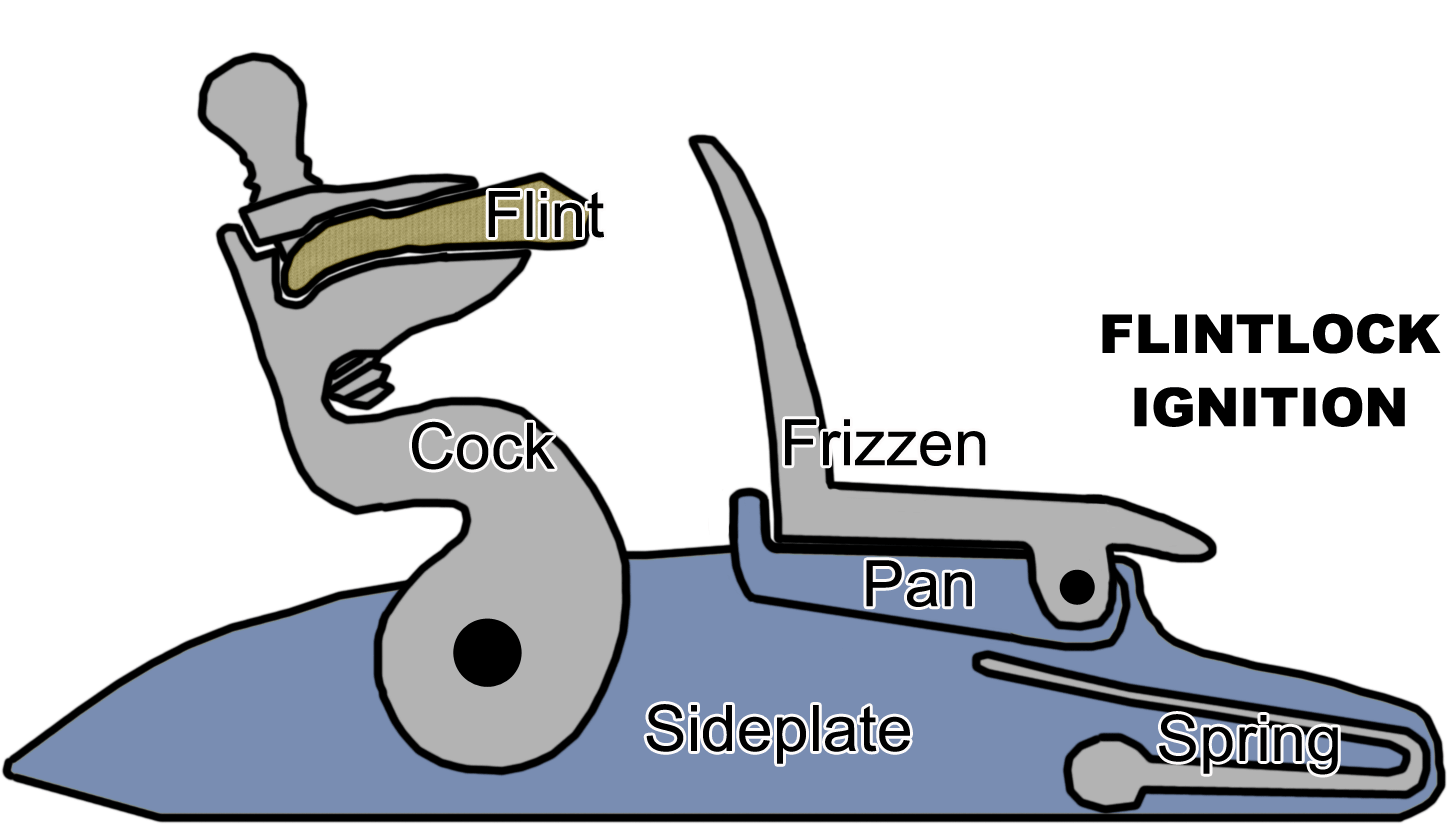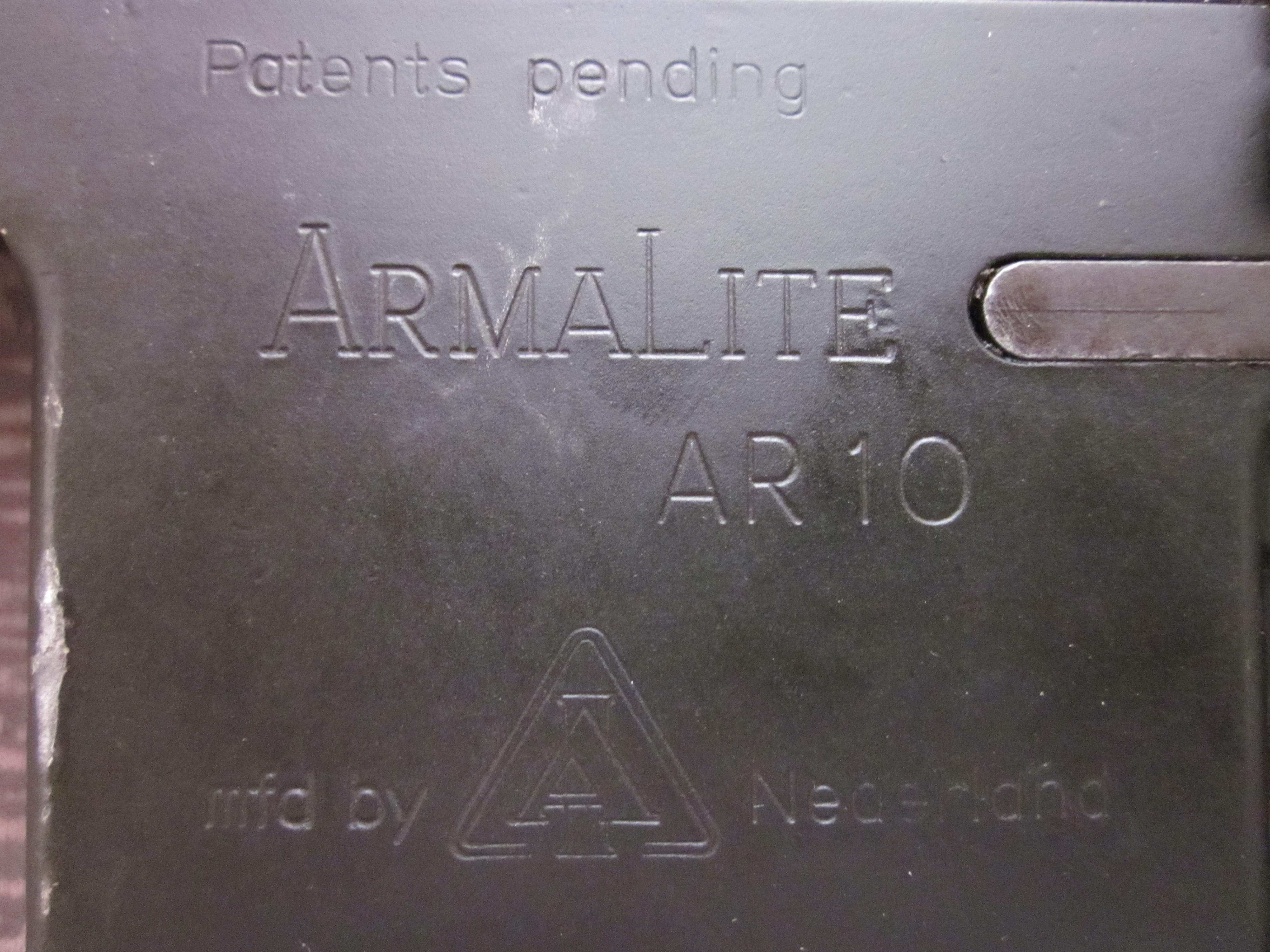|
Knight's Armament Company SR-25
The SR-25 (Stoner Rifle-25) is a designated marksman rifle and semi-automatic sniper rifle designed by Eugene Stoner and manufactured by Knight's Armament Company. The SR-25 uses a rotating bolt and a Stoner bolt and carrier piston gas system. It is loosely based on Stoner's AR-10, rebuilt in its original 7.62×51mm NATO caliber. Up to 60% of parts of the SR-25 are interchangeable with the AR-15 and M16—everything but the upper and lower receivers, the hammer, the barrel assembly and the bolt carrier group. SR-25 barrels were originally manufactured by Remington Arms with its 5R (five grooves, right twist) rifling, with twist 1:11.25. The heavy barrel is free-floating, so handguards are attached to the front of the receiver and do not touch the barrel. History In the late 1950s, Eugene Stoner designed the AR-10 battle rifle to equip U.S. troops. It was accurate for an auto-loading rifle, but it lost the competition to the M14 rifle. The patent rights for the AR-10 and ... [...More Info...] [...Related Items...] OR: [Wikipedia] [Google] [Baidu] |
Closed Bolt
A semi or full-automatic firearm which is said to fire from a closed bolt or closed breech is one where, when ready to fire, a round is in the chamber and the bolt and working parts are forward ''in battery''. When the trigger is pulled, the firing pin or striker fires the round; the action is cycled by the energy of the shot, sending the bolt to the rear, which extracts and ejects the empty cartridge case; and the bolt goes forward, feeding a fresh round from the magazine into the chamber, ready for the next shot. World War I aircraft When World War I era machine guns were being tried for use on aircraft, the Lewis gun was found not to be usable with a gun synchronizer for forward firing through the propeller, due to its firing cycle starting with an open bolt. Maxim style arms fired with a cycle starting with a closed bolt, and since the bullet firing from the gun started the firing cycle, it was much easier to set the synchronizer to trigger the gun only when the prope ... [...More Info...] [...Related Items...] OR: [Wikipedia] [Google] [Baidu] |
Remington Arms
Remington Arms Company, LLC, was an American firearms manufacturer, manufacturer of firearms and ammunition. It was formerly owned by the Remington Outdoor Company, which went bankrupt in 2020 with its lines of business sold to several purchasers. Two resulting companies each bear the ''Remington'' name—the firearms manufacturer is Remington Firearms owned by RemArms, RemArms, LLC., and the ammunition business is Remington Ammunition owned by The Kinetic Group (Czechoslovak Group#The Kinetic Group, Czechoslovak Group). Founded in 1816 by Eliphalet Remington as E. Remington and Sons in Ilion, New York, it was one of the oldest gun makers in the United States and claimed to be the oldest factory in the country that still made its original product. The company was the largest rifle manufacturer in North America according to 2015 Bureau of Alcohol, Tobacco, Firearms and Explosives, ATF statistics. The company developed or adopted more cartridges than any other gun maker or ammunit ... [...More Info...] [...Related Items...] OR: [Wikipedia] [Google] [Baidu] |
Bolt (firearm)
Bolt from a Karabiner 98k bolt-action rifle. Note the curved handle on the side for manual operation thumb"> Slide locked back on a Desert Eagle pistol, showing the gas-operated rotating bolt mechanism A bolt is the part of a repeating, breechloading firearm that blocks the rear opening (breech) of the barrel chamber while the propellant burns, and moves back and forward to facilitate loading/unloading of cartridges from the magazine. The firing pin and extractor are often integral parts of the bolt. The terms "breechblock" and "bolt" are often used interchangeably or without a clear distinction, though usually, a bolt is a type of breechblock that has a nominally circular cross-section. In most automatic firearms that use delayed blowback, recoil, or gas operation, the bolt itself is housed within the larger bolt carrier group (BCG), which contains additional parts that receives rearward push from a gas tube ( direct impingement) or a gas piston (short-stroke or lon ... [...More Info...] [...Related Items...] OR: [Wikipedia] [Google] [Baidu] |
Gun Barrel
A gun barrel is a crucial part of gun-type weapons such as small arms, small firearms, artillery pieces, and air guns. It is the straight shooting tube, usually made of rigid high-strength metal, through which a contained rapid expansion of high-pressure gas(es) is used to propel a projectile out of the front end (muzzle (firearms), muzzle) at a high velocity. The hollow interior of the barrel is called the bore, and the diameter of the bore is called its calibre, usually measured in inches or millimetres. The first firearms were made at a time when metallurgy was not advanced enough to cast tubes capable of withstanding the explosive forces of early cannons, so the pipe (often built from staves of metal) needed to be braced periodically along its length for structural reinforcement, producing an appearance somewhat reminiscent of storage barrels being stacked together, hence the English name. History Gun barrels are usually made of some type of metal or Alloy, metal alloy. ... [...More Info...] [...Related Items...] OR: [Wikipedia] [Google] [Baidu] |
Hammer (firearm)
The hammer is a part of a firearm that is used to strike the percussion cap/ primer, or a separate firing pin, to ignite the propellant and fire the projectile. It is so called because it resembles a hammer in both form and function. The hammer itself is a metal piece that forcefully rotates about a pivot point. The term tumbler can refer to a part of the hammer or a part mechanically attached to the pivot-point of the hammer, depending on the particular firearm under discussion (see half-cock). According to one source the term tumbler is synonymous with hammer. Evolution In the development of firearms, the flintlock used flint striking steel to produce sparks and initiate firing by igniting the gunpowder used as a propellant. The flint was fixed to a swinging arm called the ''cock''. Prior to firing, the cock was held rearward under spring tension. Pulling the trigger allowed the cock to rotate forward at a speed sufficient to produce sparks when it struck the steel frizzen ... [...More Info...] [...Related Items...] OR: [Wikipedia] [Google] [Baidu] |
Receiver (firearms)
In firearms terminology and law, the firearm frame or receiver is the part of a firearm which integrates other components by providing housing (engineering), housing for internal action (firearms), action components such as the hammer (firearms), hammer, bolt (firearms), bolt or breechblock, firing pin and extractor (firearms), extractor, and has screw thread, threaded interfaces for externally attaching ("receiving") components such as the gun barrel, barrel, stock (firearms), stock, trigger (firearms), trigger mechanism and iron sights, iron/sight (device)#Optical sights, optical sights. Some firearm designs, such as the AR-15 platform, feature receivers that have 2 separate sub-assemblies called the upper receiver which houses the barrel/trunnion, bolt components etc and the lower receiver (Trigger Mechanism Housing in some cases) that holds the fire control group, pistol grip, selector, stock etc. The receiver is often made of forged, machined, or stamped steel or aluminium. Ap ... [...More Info...] [...Related Items...] OR: [Wikipedia] [Google] [Baidu] |
M16 Rifle
The M16 (officially Rifle, Caliber 5.56 mm, M16) is a family of assault rifles adapted from the ArmaLite AR-15 rifle for the United States Armed Forces, United States military. The original M16 was a 5.56×45mm NATO, 5.56×45mm automatic rifle with a 20-round magazine. In 1964, the XM16E1 entered US military service as the M16 and in the following year was deployed for jungle warfare operations during the Vietnam War. In 1969, the M16A1 replaced the M14 rifle to become the US military's standard service rifle. The M16A1 incorporated numerous modifications including a bolt-assist ("forward-assist"), chrome-plated bore, protective reinforcement around the magazine release, and revised flash hider. In 1983, the United States Marine Corps, US Marine Corps adopted the M16A2 rifle, and the United States Army, US Army adopted it in 1986. The M16A2 fires the improved 5.56×45mm (M855/SS109) cartridge and has a newer adjustable rear sight, case deflector, heavy barrel, improved ha ... [...More Info...] [...Related Items...] OR: [Wikipedia] [Google] [Baidu] |
AR-10
The ArmaLite AR-10 is a 7.62×51mm NATO battle rifle designed by Eugene Stoner in the late 1950s and manufactured by ArmaLite (then a division of the Fairchild (aircraft manufacturer), Fairchild Aircraft Corporation). When first introduced in 1956, the AR-10 used an innovative combination of a straight-line barrel/stock design with Phenol formaldehyde resin#Applications, phenolic composite, a new patent-filed gas-operated bolt and carrier system and forged alloy parts resulting in a small arm significantly easier to control in automatic fire and over lighter than other infantry rifles of the day. Over its production life, the original AR-10 was built in relatively small numbers, with fewer than 10,000 rifles assembled. However, the ArmaLite AR-10 would become the progenitor for a wide range of firearms. In 1957, the basic AR-10 design was rescaled and substantially modified by ArmaLite to accommodate the .223 Remington cartridge, and given the designation ArmaLite AR-15. In 1959, ... [...More Info...] [...Related Items...] OR: [Wikipedia] [Google] [Baidu] |
Semi-automatic Firearm
A semi-automatic firearm, also called a self-loading or autoloading firearm ( fully automatic and selective fire firearms are also variations on self-loading firearms), is a repeating firearm whose action mechanism automatically loads a following round of cartridge into the chamber and prepares it for subsequent firing, but requires the shooter to manually actuate the trigger in order to discharge each shot. Typically, this involves the weapon's action utilizing the excess energy released during the preceding shot (in the form of recoil or high-pressure gas expanding within the bore) to unlock and move the bolt, extracting and ejecting the spent cartridge case from the chamber, re-cocking the firing mechanism, and loading a new cartridge into the firing chamber, all without input from the user. To fire again, however, the user must actively release the trigger, and allow it to "reset", before pulling the trigger again to fire off the next round. As a result, each trigger p ... [...More Info...] [...Related Items...] OR: [Wikipedia] [Google] [Baidu] |
Designated Marksman Rifle
A designated marksman rifle (DMR) is a modern telescopic sight, scoped high-Accuracy and precision, precision rifle used by infantry in the designated marksman (DM) role. It generally fills the engagement effective range, range gap between a service rifle and a dedicated sniper rifle, at around . DMRs are distinguished from sniper rifles in that they are semi-automatic rifle, semi-automatic to provide higher rate of fire, rates of fire (with some also having selective fire to switch to Burst mode (weapons), burst or Automatic firearm, automatic) and have larger magazine (firearms), magazine capacities (10, 20, or 30 rounds depending on the firearm and operational requirements) to allow rapid engagement of multiple targets. DMRs have to be effective, in terms of probability of kill, hit rates and terminal ballistics, at application ranges exceeding those of ordinary assault rifles and battle rifles, but do not require the extended-range performance of a dedicated sniper rifle. DMR ... [...More Info...] [...Related Items...] OR: [Wikipedia] [Google] [Baidu] |







